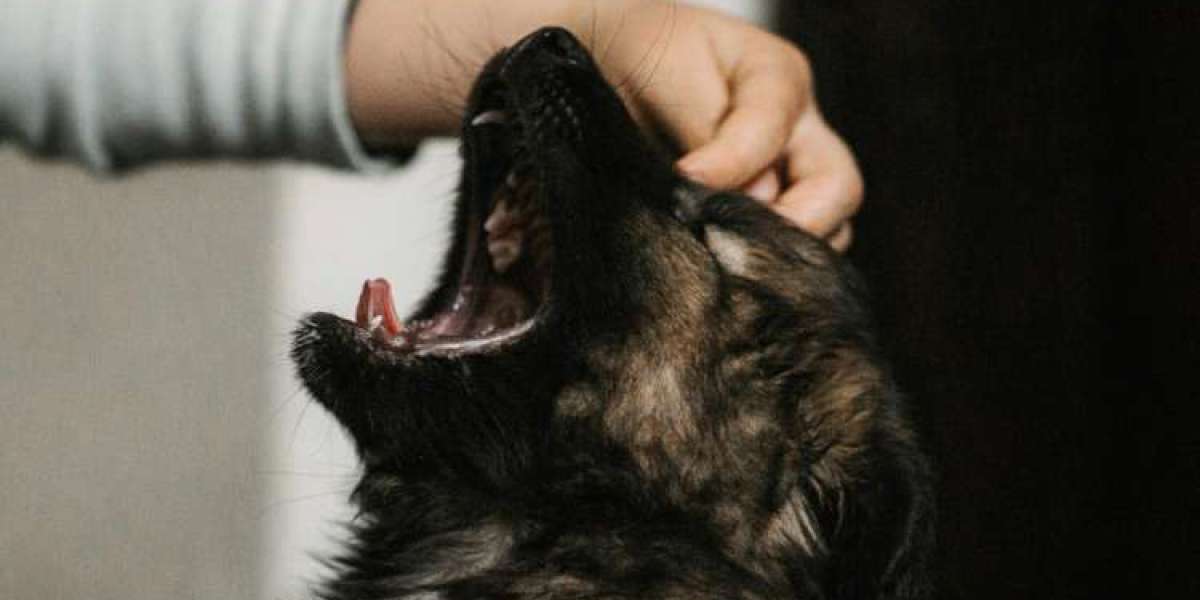Few things are as terrifying as watching your pet struggle to breathe. Choking and airway blockages are true emergencies that can turn fatal in minutes if not handled correctly. Whether caused by food, toys, or foreign objects, airway obstruction requires fast, calm, and informed action. Understanding the signs of choking and knowing what to do before you reach the vet could save your pet's life.
Common Causes of Choking in Pets
Dogs and cats explore the world with their mouths, which makes them prone to swallowing things they shouldn't. Some of the most common causes of choking include:
- Small toys or balls – Particularly rubber or plastic toys that can block the throat.
- Rawhide, bones, or food pieces – Especially hard treats or large chunks of food.
- Household items – Buttons, bottle caps, string, or children’s toys.
- Collar or leash entanglement – Pets can sometimes choke if collars get caught or tighten unexpectedly.
- Medical issues – Throat swelling, tumors, or allergic reactions can also obstruct the airway.
Warning Signs Your Pet Is Choking
Choking symptoms can look different depending on how much of the airway is blocked, but the most common signs include:
- Difficulty breathing or noisy breathing (wheezing, gagging, or gasping)
- Pawing frantically at the mouth
- Coughing or hacking sounds
- Blue or pale gums and tongue (a sign of low oxygen)
- Panic, restlessness, or collapse
- Unconsciousness if the blockage is not cleared quickly
If your pet shows any of these symptoms, act immediately—choking is always an emergency.
What to Do If Your Pet Is Choking
When every second counts, your response can mean the difference between life and death. Here’s what to do if you suspect your pet is choking:
- Stay calm but act fast. Pets sense panic, which can make them struggle more.
- Check inside the mouth. If it’s safe, gently open your pet’s mouth and look for any visible obstruction.
- Remove the object carefully. Use tweezers or your fingers to remove visible items—but do not push objects deeper down the throat.
- For small dogs and cats: Lay them on their side and apply gentle pressure on the chest to help expel the object.
- For larger dogs: Perform a modified Heimlich maneuver:
- Stand behind your dog and place your arms around their waist.
- Make a fist and place it just behind the ribcage, then thrust upward and forward 4–5 times.
- Check the mouth again to see if the object has come loose.
- If your pet collapses or stops breathing: Begin rescue breathing (if trained) and head to the nearest emergency vet immediately.
Even if you remove the object successfully, your pet should still be examined by a veterinarian. There may be throat injuries or swelling that need medical attention.
Emergency Veterinary Treatment
At the emergency hospital, veterinarians will assess your pet’s breathing and oxygen levels right away. Treatment may include:
- Oxygen therapy – To restore normal breathing and oxygen flow.
- Endoscopy – Using a small camera to locate and remove deep obstructions.
- Intubation or tracheostomy – If the airway is severely blocked or swollen.
- Medications – Such as anti-inflammatories or antibiotics to reduce swelling and prevent infection.
- Monitoring – Pets may need observation to ensure they recover safely and can breathe normally.
For fast, life-saving care, visit North MS Pet Emergency . Their team is trained to handle airway blockages and critical breathing emergencies, even after hours or on weekends.
How to Prevent Choking in Pets
While some accidents are unavoidable, most choking incidents can be prevented with a few simple precautions:
- Choose size-appropriate toys—avoid small or easily swallowed objects.
- Supervise pets while they eat or chew on treats and bones.
- Keep trash, clothing, and small objects out of reach.
- Feed food that is easy to chew and swallow, especially for small or senior pets.
- Remove collars when your pet is in a crate or played unsupervised to prevent entanglement.
When to See a Veterinarian
Any episode of choking warrants a veterinary visit—even if your pet seems fine afterward. Internal swelling, bruising, or aspiration (inhaling food or fluid into the lungs) can cause complications hours later. A veterinarian can check for airway injury, prescribe medication if needed, and ensure your pet is truly in the clear.
Final Thoughts
Choking and airway emergencies suddenly happen and can be terrifying for both pets and owners. Acting quickly, staying calm, and knowing basic first-aid steps can save precious time before you reach the vet. However, professional treatment is always necessary to ensure full recovery.
If your pet is choking, gasping, or unable to breathe, contact your veterinarian or North MS Pet Emergency immediately. Their 24/7 emergency team is equipped to provide oxygen support, airway procedures, and critical care when every moment matters.
With preparation and awareness, you can respond effectively to a choking emergency and protect your beloved companion from tragedy.








